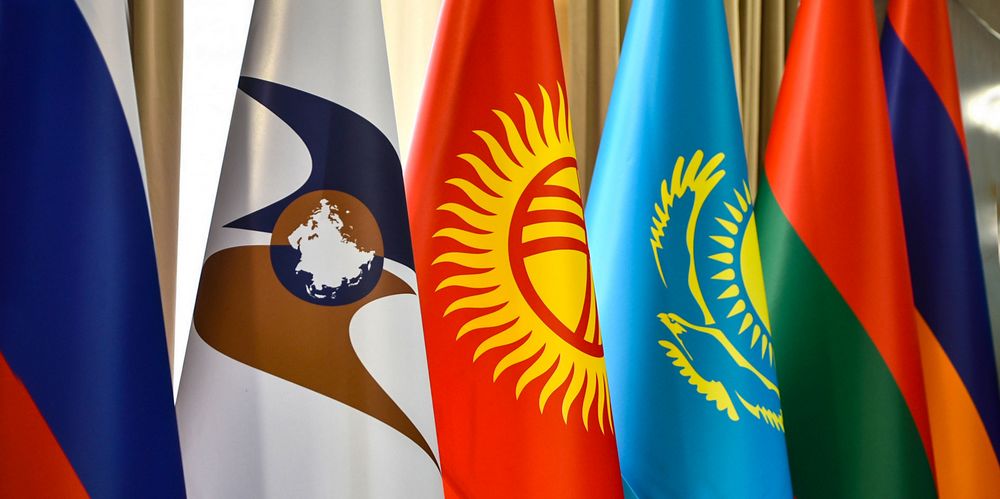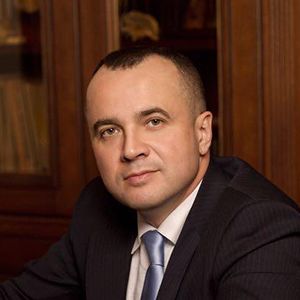Search

Publications
EAEU in the new environment: risks and challenges

The Eurasian Economic Union (EAEU) was founded in May 2014 and effectively started its activities from 1 January 2015. Today it is a well-established and actively developing organization (not without problems, though) holding a prominent position in the FSU area.
Progress
Speaking about the current EAEU status, we should especially highlight the following:
- The project is quite successful from the institutional point of view. The governing bodies of the Union were formed during a relatively short period of time, and are now operating efficiently and at a rhythmical pace. Their operations are organically integrated into the government systems of all the member-countries;
- The decisions of EAEU are clearly worded and control over their implementation is efficient;
- Customs control was abolished at the borders inside the Eurasian Economic Union, the average weighted single rate of the customs tariff was decreased significantly, the uniform package of protective measures for the inner market was developed and implemented together with the uniform customs tariff;
- The uniform technical regulation system is implemented in EAEU, and the common EAEU Customs Code was introduced starting from January 2017;
- The decisions of the Eurasian Economic Commission (EAEC) came into effect starting from 8 May 2022 temporarily cancelling the import customs duties established by the EAEU uniform customs tariff with respect to certain categories of goods (nearly 300 items);
- The financial laws and regulations are being harmonized in the EAEU member-countries including the formation of the common exchange space;
- Late in 2018, the Higher Eurasian Economic Council (HEEC) adopted the Declaration on further development of integration processes with the EAEU enhancing the opportunities for interaction in the ground-breaking areas of science and economy including aerospace sector, nuclear energy, renewable energy sources, ecology, healthcare;
- In October 2019, the Concept of the EAEU Common Financial Market was approved. As of late February 2022, more than 330 EAEU organization were connected to the financial messaging system of the Bank of Russia (SPFS) including the banks of Kazakhstan, Kyrgyzstan and Armenia;
In 2020, the EAEU Higher Economic Council adopted the document of crucial significance for the Union – the «Strategic Areas of Eurasian Integration Development until 2025» containing the list of specific measures and mechanisms for implementation of the above-mentioned strategies agreed by the member-countries. The last point in this list is the aggregated target the member-countries need to achieve collectively via implementing of the listed objectives: «Formation of the Union as one of the most significant development centers of the modern world».
At the same time, the semiotic fact is that the adoption of the Strategy turned out to be quite a complicated matter. The initial document prepared by the Eurasian Economic Commission (EAEC) for the HEEC meeting in May 2020 was not agreed by Kazakhstan as «unjustifiably jumping ahead» and «restricting the sovereign rights of the national parliaments and governments».
Unfortunately, Kazakhstan was against expanding the EAEC powers and stated that assigning the additional authorities in healthcare, education and science «significantly changes the economic nature of the Commission».
In addition, Kazakhstan did not agree with the idea of EAEC participating in the bilateral negotiations of the member-countries with the third parties (non-member-countries) on trade and economic issues emphasizing that «the services trading and investment are the spheres of national competence». Some experts had an impression then that Kazakhstan, though avoiding the straightforward statement, obviously demonstrated its dissatisfaction with the EAEC practices as the supranational authority and with the preparation of documents to be reviewed by HEEC. All this resulted in sending the document for finalization and in adopting it only six months later after amendments and additional endorsements.
The EAEU Treaty stipulates for free trading of services, as well as free movement of institutions and investment. The efforts in this area are task-oriented and intense. According to the EAEC, the EAEU common services market by 2025 will cover up to 60% of aggregated FSU market.
In July 2022, to harmonize the industrial policies of the member countries, the heads of their governments decided to establish the Commission for import phase-out and industrial cooperation.
The trade metrics of 2021 are quite exemplary evidence of the EAEU efficiency achieved as of today including trade within the Union and with non-member-countries. This year is meaningful, as it was characterized by rather intense sanctions-related pressure on the leading countries within the organization – Russia and Belarus, as well as by the negative effects of the pandemic on the global economy. According to EAEC, the mutual trade volumes of the EAEU member-countries grew by 31.9% vs. 2020, and by 17.8% vs. 2019, the year before the COVID breakout.
All the member-countries demonstrate the export volumes growth. The highest export growth rates were recorded in Kyrgyzstan (44.9%) and Kazakhstan (34.9%). The foreign trade volumes in EAEU in 2021 constituted USD 844.2 bn, which is 35.1% higher than in 2020, and 14.7% higher than in 2019. In 2021, the commodities export to non-member countries grew by 44.1%, and import from such countries – by 22.6%. Belarus (47.8% growth) and Russia (47.0% growth) were the biggest contributors to export beyond the EAEU.
The need for common currency
One of the key strategic tasks when forming the EAEU was worded as switching to the single currency settlements. And even though certain member-countries (mainly Kazakhstan) are deliberately and actively impeding this process, there is still certain progress in this area.
The implementation of the first-level task was quite successful (to a great extent – due to the currency-related sanctions) in gradual shift from settlements in US Dollars and increasing the role of national currency, mainly the Russian Ruble. As of today, about 70% of settlements in the EAEU are done in national currencies. At the meeting of Eurasian Intergovernmental Council on June 20-21, the Chairman of the RF Government M.V. Mishustin proposed to accelerate the transition to «the proprietary mechanisms of international financial settlements, to enhance the practice of using national currencies in foreign trade both within the EAEU and with other countries proven to be reliable partners».
Simultaneously, in early June 2022, information appeared that the Russian banking sector players were planning to establish their proprietary payment system using the domestic financial infrastructure. According to some experts, such international partners of Russia as Ethiopia, Venezuela and Turkey expressed their interest in this project.
According to the EAEU Treaty, the common financial market is to be built in two stages. During the first stage, until 2024, the national laws regulating the financial markets are to be harmonized; at the second stage, starting from 2025, EAEU is to switch to the supranational regulation.
Currently, pretty intense work is already going on with respect to the tasks of the second stage – first of all, establishing a single supranational regulator and unification of the process of licensing banks and insurance companies. In a number of EAEU countries the new regulation is viewed as excessive; however, in the long run, they will facilitate the improvement of the common market. At the same time, the differences in positions of various countries became clear; obviously, at the early stages especially, they can impede the implementation of this regime and limit the scope of powers granted to such supranational regulator, which eventually may weaken the expected positive impetus of this important measure.
The ultimate goal was announced by Sergey Glazyev, the EAEC minister for integration and macroeconomics. It is harmonization of currency regulation to stop flight of capital, to achieve de-dollarization and de-offshorization of the member-countries’ economies, to stabilize the EAEU currencies exchange rates. It stipulates for the establishment of Eurasian exchanges and pricing mechanisms. The major part of these tasks may be implemented via introducing the EAEU common/single currency.
The common capital market cannot exist without such single currency, and significantly more investment into the economies of the member-countries is needed to channel them in the nearest years to re-industrialization (for which the West used to be the source until recently). That is why the quite logical task is to introduce EAEU common non-cash currency, which could perform the function of the EAEU increasing budget currency and could be used for financing the investment programs by the Eurasian Development Bank. Introducing the second EAEU common currency, according to some experts, would allow for the targeted investment policy implementation and for creating favorable environment for more effective utilization of forex/gold reserves without decreasing them.
Potentially, the digital Ruble may perform as such second common currency for EAEU, but many experts (especially from the RF allied countries) believe, that with account of the current situation with Russian currency, it would be much more correct to apply the consensus-based approach meaning that each member-country will set aside a share of its forex/gold reserves equal to its GDP. This incentive is underpinned by a serious economic basis; however, it may be easily assumed that the political factors may be the main impeding forces counteracting it. It also seems that this model could eliminate only part of the existing contradictions and would help to resolve only part of the challenges inevitable in the process of common market formation.
Overall, it could be forecasted that even without the utmost consent between the EAEU member-countries and the expected deterrence of the efforts to implement the common EAEU Ruble-based currency by a number of countries, this process is gradually acquiring more specific and tangible contours due to some current realities. The Russian Ruble parameters and the time of it acquiring more strength and stability will define the time of implementing the EAEU common currency, its outlook and the operating regime.
As for decreasing the share of financial transactions in USD within the EAEU, according to the experts, in the very near future they may constitute 15%, and 85% of all the transactions will be in Rubles. It is forecasted that Kazakhstan together with Kyrgyzstan and Armenia will account for the major part of trade operations in hard currencies. Overall, the development logic is convincing that settlements in national currencies will be not only commercially feasible, but will provide the protection against the pressure of sanctions and will assure the effective economic sovereignty.
The existing challenges
The major factors impeding the integration processes in the EAEU from the very start of this project are significant gaps between the level of economic development of its member-countries, the inherited «oppressed nations complexes» of local elites and their aspirations to emphasize their independence from Moscow.
In this context, the level of integration within EAEU achieved as of today may be estimated as unconditional success of Russian policy of levelling the centrifugal trends in certain FSU areas, of soft retention of strategically important partners within the zone of Russian influence, of forming the basis for integration development.
All the FSU countries have undergone the periods of economic decline and internal political crises, many of them became subjects of influence via the so-called color-revolutions instigated from outside. The strategic objective of the Western activities was the alienation of these countries from Russia, but this was not the way for them to acquire new development prospects and opportunities. Mainly because of this, EAEU member-countries continue to stay in the Russian orbit.
«The big partnership»
As of today, the EAEU has enough intensive and well-developed international ties. For example, the Free Trade Areas (FTA) agreements were executed and are already in effect with Vietnam (29 May 2015), Singapore (1 October 2019), and Serbia (25 October 2019). Similar agreements with Egypt, Israel, India, China, Mongolia and Thailand are currently at the stage of active negotiations.
Russia is undertaking concerted effort to form the so-called «big partnership» at the Eurasian continent. President Putin proposed this idea at the very start of EAEU back in 2016 during the Russia – ASEAN summit in Sochi offering the concept of «EEU, SEAN and SCO association». In the same year, during the Saint-Petersburg International Economic Forum (SPIEF), the Russian President for the first time worded the «big partnership» idea based on combining the capabilities of EAEU, China, India, Pakistan, Iran and a number of other countries. The following years demonstrated that Russia remains committed to this plan and implements this mega-project into practice persistently and in consistent manner.
At the same SPIEF, the President of Kazakhstan proposed to establish the partnership of the EAEU and the European. However, neither at that time, nor afterwards the EU did not demonstrate any interest in this initiative and did not respond to it. The follow-up events completely derailed this prospect. Thus, the timeliness of the Asian focus was fully confirmed not only for the political and foreign trade activities of the Russian Federation, but for the EAEU as well.
The West acknowledged the EAEU success story. Strengthening the Russian positions, the RF aspiration for stabilizing the situation on its borders are perceived by the USA and their European allies as a direct threat.
It is appropriate to assume that the coup-d’état attempts in Belarus, Kyrgyzstan, Armenia and Kazakhstan were planned and prepared with the purpose to deter Russia, to make the EAEU structure collapse, to create the instability zone at the Russian borders.
2020 and 2021 became exclusively crucial for the EAEU, as all the Russia’s allies without exception found themselves under the sanctions-related pressure in that or another form. In all those cases, such attacks were repelled only with the help of Russia.
In the case of Kazakhstan, the Collective Security Treaty Organization was the first time engaged. The CSTO confirmed its commitment and capability to perform efficiently in the emergency situation.
The dominating role of Russia as a leader in a critical moment was clearly demonstrated to all the EAEU member-countries.
The factor of Kazakhstan
The global crisis, which is currently developing and demonstrating the build-up trend is definitely of a landmark nature, including the integration outlook in the Eurasian zone. Obviously, it will predetermine, especially at its early stage, even higher «conservatism and caution» on behalf of the EAEU member-countries’ leaders. This is, first of all, true with respect to Kazakhstan.
A number of statements by the President of Kazakhstan stand out in this context. Two of them were voices at the SPIEF in June 2022, when answering the straight-forward question about Nur-Sultan recognizing the Donetsk and Lugansk People’s Republics, Kassym-Jomart Tokayev gave a tough response that the topic of recognizing the «quasi-republics» was not on Kazakhstan’s agenda. He explained his position emphasizing that his country was against the «chaos», which may occur «if all the nations implement their right to self-determination». Simultaneously, President Tokayev noted that there were different opinion in Kazakhstan with respect to the special military operation of Russia in Ukraine, justifying his position by the fact of having «a mature civil society» in his country.
On top of that, in his interview to the All-Russian State Television and Radio Broadcasting Company on June 15, President Tokayev, on one hand, confirmed Kazakhstan being a reliable ally to Russia within the CSTO, but, on the other hand, emphasized that his country will not be assisting Moscow in by-passing the imposed anti-Russian sanction. «Sanctions are sanctions, and we should not violate them», Tokayev said. In this relation, he also emphasized the risk of the secondary sanction on behalf of the US and the EU for Kazakhstan.
In this context, the unofficial but apparently hyped by Kazakhstan expert community and media negative reaction to the temporarily suspended pumping of the crude oil from Kazakhstan fields Tengiz, Kashagan and Karachaganak operated by American, European and British companies via the Caspian Pipeline Consortium (CPC) pipeline running through the Russian territory. Such suspension was implemented by the order of Russian court dated 5 July 2022. At the same time, in Kazakhstan they do not focus on the fact that the decision of the court was not of political character, but was caused by the failure to abide by the prescriptive order of the Russian Federal State Agency for Health and Consumer Rights to eliminate the consequences of the oil spill by the CPC operators.
We can assume with high level of confidence that the statements by the Kazakhstan leader, even though they were made in front of the Russian audience, were in reality addressed to the Western countries with the purpose to continue the course for certain distancing from Moscow.
The above listed facts evidence that the task of strengthening the trends for integration with the EAEU will remain exclusively important for Russia, which means overcoming the «wait-and-see» stance of the allies, facilitation of the process of assigning the supranational powers and functions to the EAEU governing bodies. In the foreseeable future, Kazakhstan will remain the key vector of such efforts within the EAEU, because the political leaders of this particular country express the most dangerous for the integration positions.
Outlook
From the standpoint of the EAEU expansion, interaction with the political leaders of Azerbaijan require special attention. At the same time, the systemic work with the Turkish leaders and the prospects of bringing the cooperation with this country to a completely new level (in the context of the outcomes of the recent trilateral summit in Teheran) opens without prejudice additional opportunities for both Russia and Azerbaijan.
The unfolding situation is favorable for more active participation of Iran in the integration processes. The capabilities of this country can provide an additional powerful impetus.
Achieving the objectives of Russian special military operation in Ukraine is an important pre-condition for implementing Russia’s plans in the Eurasian area. This will create the basis for assuring the national security of the RF and will allow for implementation of the Kremlin’s strategic projects, the big Eurasian partnership being one of them.
The Eurasian integration trajectory should follow the way of engaging more and more participants. Among the countries demonstrating their interest in this idea China, India, Iran, Turkey and Indonesia are the key «hubs».
Russia should be active in implementing its political course keeping the initiative in determining the tasks, the level of their priority and the timeline of their implementation. The rivalry between the EAEU member-countries for leadership may be expected as the project grows in scale, and Russia should be ready to protect its positions and interests.
One of the areas for rivalry will be determination of the contours and parameters of the currency and finance system. The priority objective here is not to lose the Ruble’s position in the shadow of the allied countries’ currencies, because it will to a great extent determine the global role and the importance of Russia.
Moscow should be ready to neutralize Western activities to bring chaos to Russia and to the neighboring countries. The concerted efforts of the USA and their allies should be expected to counteract the Eurasian integration. Such activities may be focused on the EAEU and on other countries capable of determining the potential configuration of the Eurasian union.
Russia has no other choice but to implement the economic, scientific and technological breakthrough, to bring the living standards of the Russian society to the completely new level and based on that – to assure sustainable population growth. The global history provides for specific timeline to implement all these plans, which is defined by the time for distribution of roles in the new world.







